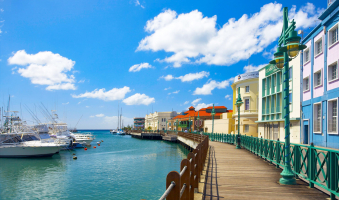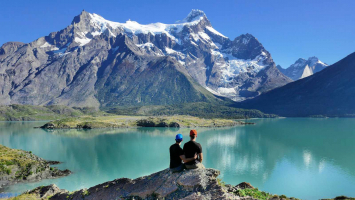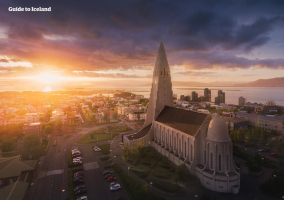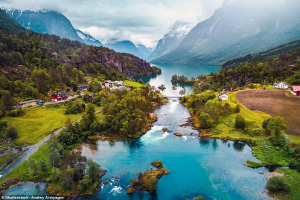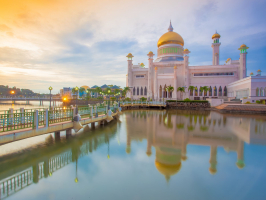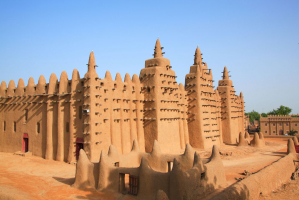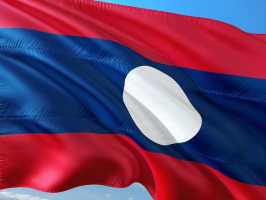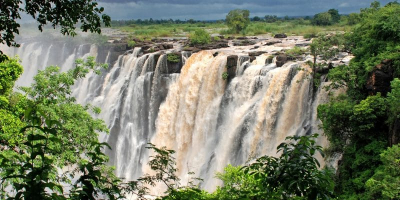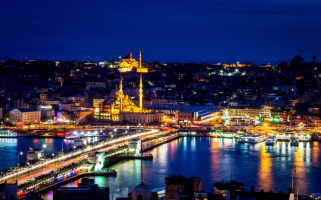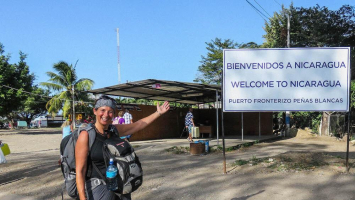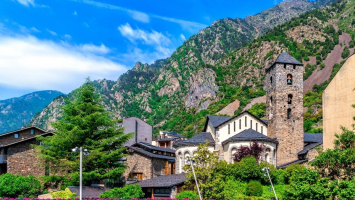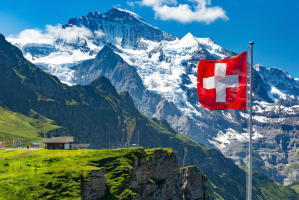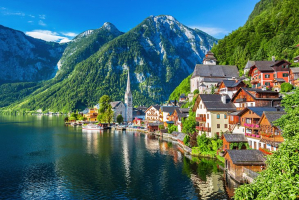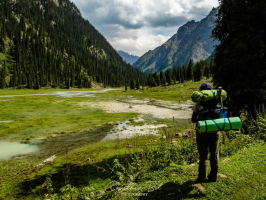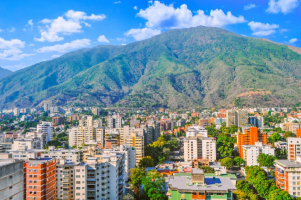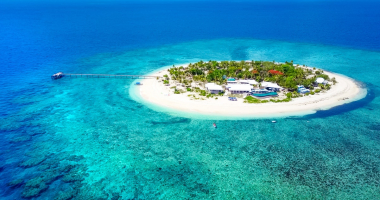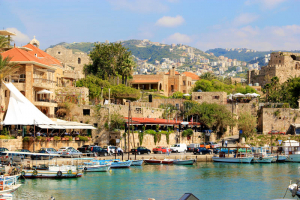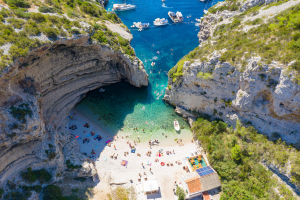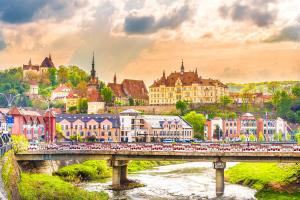Top 12 Things About Myanmar You Should Know
Do you want to learn a few fascinating and amusing facts about Myanmar before you go? Learning some of the numerous Myanmar amusing facts provides insight into ... read more...the country's culture and customs, which will enrich your visitor experience. Here are the top 12 things about Mynamar you should know.
-
The first thing travelers notice is that the country is referred to differently by different individuals. Some call it Myanmar, while others call it Burma. This is unusual and perhaps one-of-a-kind.
So, what's it all about? Burma was the name given to the nation by the British during their monarchy, which lasted from 1824 to 1948. Burma derives its name from the majority Bamar ethnic group, which accounts for 70% of the population.
Following independence, the country was controlled by a repressive dictatorship commanded by a military junta. Burma was renamed the Republic of the Union of Myanmar in 1989, and Rangoon was renamed Yangon. Many democratic states refused to recognize the junta's control and hence refused to recognize the name change. Instead, they referred to it by its old name. In a nutshell, the old name is Burma, and the new name is Myanmar.
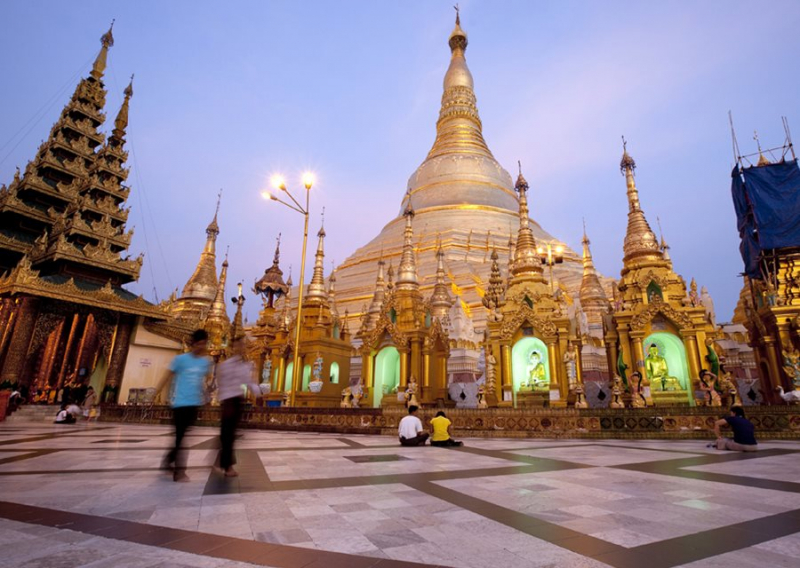
insightguides.com 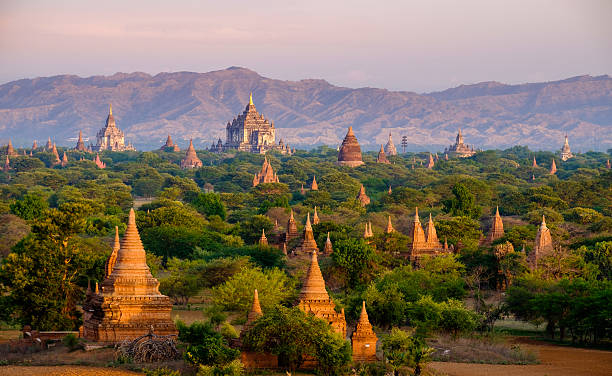
istockphoto.com -
The Water Festival, also known as Thingyan, is one of the country's largest celebrations. Thousands of people come to the streets in April to celebrate the Burmese New Year with a massive water battle. Everyone has a good time, and it's one of the most significant truths about Myanmar culture that tourists should be aware of. Participating is most likely the finest vacation experience you can have here. The water festival is definitely one of the things about Myanmar you should know.
Thingyan's narrative is based on a Buddhist interpretation of a Hindu fable. According to legend, the King of Brahmas, Arsi, lost a wager to the King of Devas, Sakra (or Thagya Min as he is known in Myanmar). Arsi was beheaded after losing the wager, and the head of an elephant was placed on his body (transforming him into Ganesha). The Brahma was so strong that if his head was thrown into the sea, it would immediately dry up. If I were to be hurled into the air, the sky would shatter into frames. As a result, Sakra ordered that the Brahma's head be borne by one princess Devi after another for a year each. Thingyan festival commemorates the shifting of Brahma's hands and marks the beginning of the New Year.
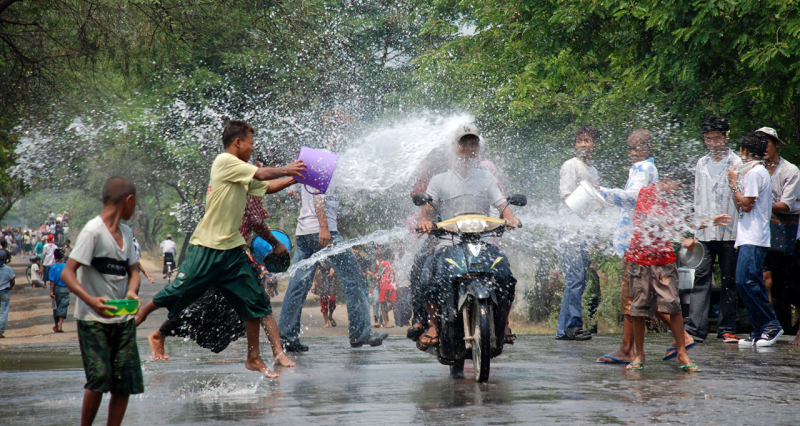
myanmartravel.com 
discoverydmc.com -
The longyi is a traditional article of clothing worn by both men and women in Myanmar. A big 2-meter fabric, akin to a sarong, is wrapped around the lower part of the body. People wear this on almost every occasion. Men will be seen wearing a shirt with a longyi to the workplace, and ladies will be seen lazing around.
Longyis worn by men is known as pasoww (, or paso), while those worn by women are known as htamein (, or htamain). They are not strictly speaking unisex clothes because the manner they are worn, as well as the designs and cosmetics, varies between the genders.
Men wear the contemporary pasoww by folding it on each side in front and tucking it in at the waist just below the navel. Women, on the other hand, have always had a three cubit one-finger span length, but they were unsewn like men's. They are wrapped around the waist with a single broad fold in front and the end tucked in on one side, or folded back at the hip and tucked into the other side of the waist, and are frequently topped with a fitting blouse worn only to the waistline.
Hemlines rise and fall with the trend of the day, but they are unlikely to climb past the knee. Longyis are often offered unfinished, although they are increasingly available ready to wear; htameins can even be sewed like Western skirts. Untying and re-tying a lon chee is a common sight in public, with women doing it much more quietly than males. The design and method of tying the knot distinguish male and female longyi. Men wear their knot out in front, whilst women tuck it inside.
Tourists are drawn to this traditional costume and frequently put it on, much to the delight of the residents. However, you may be required to wear one, particularly if you are dressed improperly to enter a holy place.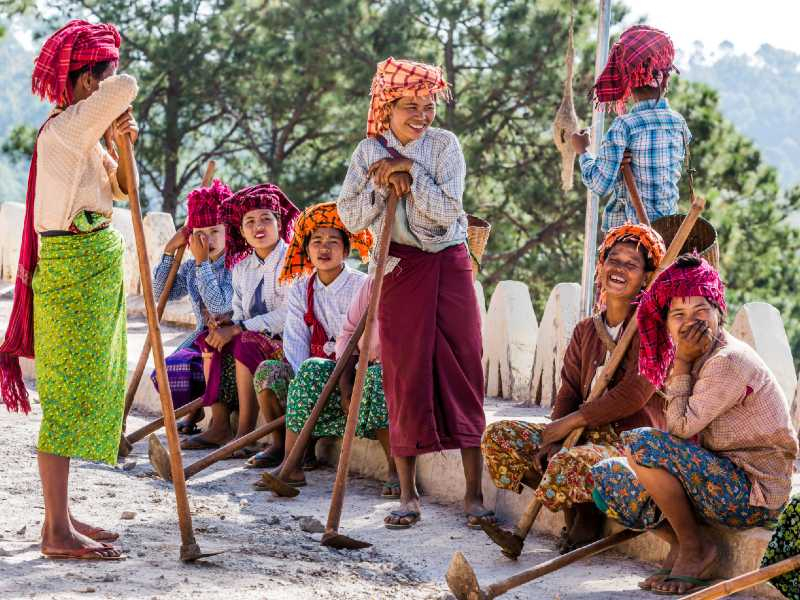
exoticvoyages.com -
This is one of the things about Myanmar you should know that you'll notice when visiting and traveling across the nation. People, particularly women, prefer to carry objects on their heads rather than with their hands. Foreigners are initially taken aback and recall travel shows about Africa. However, carrying items on one's head is a popular and more convenient mode of transportation. Vendors can be seen carrying food on a huge metal plate or even a basket full of weekly groceries on their heads.
One of the most odd facts about Myanmar that you'll notice very regularly when visiting and traveling in the nation is that goods are carried on the head. People, particularly women, prefer to carry objects on their heads rather than with their hands. Carrying items on one's head is still common and a more practical mode of transportation.
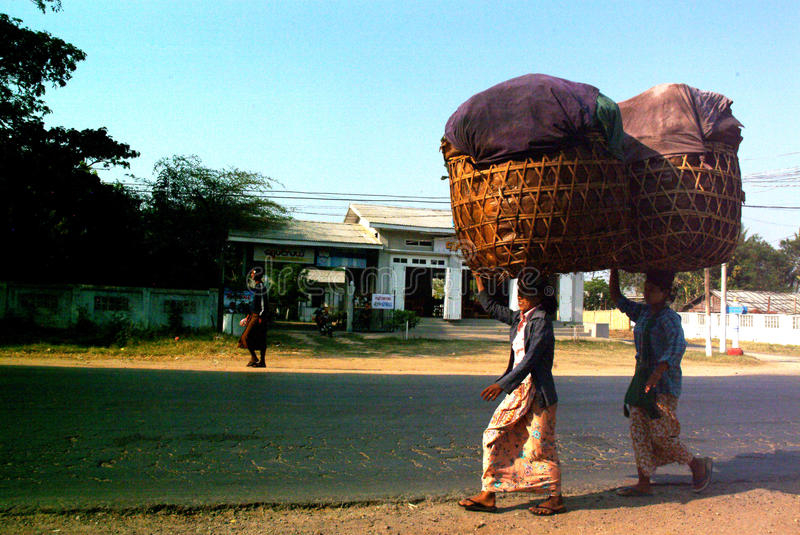
dreamstime.com 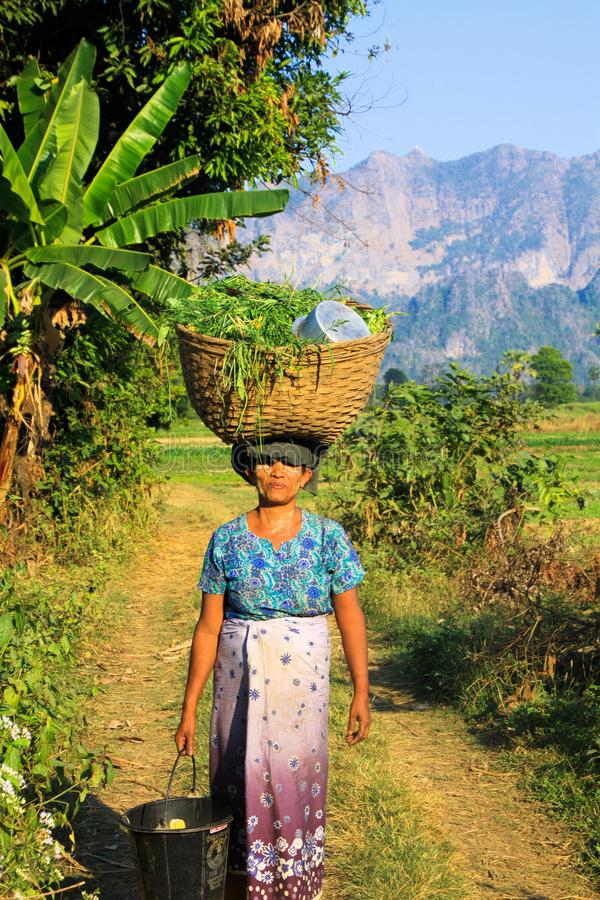
dreamstime.com -
The Kingdom of Pagan (Burmese: ပုဂံခေတ်, pronounced [bəɡàɰ̃ kʰɪʔ]; also known as the Pagan Dynasty and the Pagan Empire; previously known as the Bagan Dynasty or Bagan Empire) was the first Burmese kingdom to combine the provinces that would eventually become modern-day Myanmar (Burma). Pagan's 250-year control over the Irrawaddy valley and its outskirts established the groundwork for the rise of the Burmese language and culture, the development of Burman ethnicity in Upper Burma, and the expansion of Theravada Buddhism in Burma and mainland Southeast Asia.
The kingdom arose from a minor 9th-century colony at Pagan (modern-day Bagan) by the Mranma (Burmans), who had recently reached the Irrawaddy valley from the Kingdom of Nanzhao. Over the next two centuries, the little principality progressively expanded to incorporate its surrounding areas until the 1050s and 1060s, when King Anawrahta established the Pagan Empire, uniting the Irrawaddy valley and its perimeter under one government for the first time. Anawrahta's successors had expanded their dominance to the south into the upper Malay peninsula, to the east at least to the Salween river, to the north to below the modern China border, and to the west, into northern Arakan and the Chin Hills by the late 12th century. Pagan was one of two major empires in mainland Southeast Asia in the 12th and 13th centuries, alongside the Khmer Empire.
A huge and strong Kingdom existed in the plains of central Myanmar in the 12th and 13th centuries. Kings constructed a series of historic temples and pagodas, which formed a focal point for Theravada Buddhism. This was also the cradle of Burmese culture and linguistic domination in modern-day Myanmar. Visiting temples in the contemporary era of Bagan is one of the most popular things to do when visiting the nation. In a relatively small region, you may visit over 2000 holy sites and enjoy the finest sunset of your life.
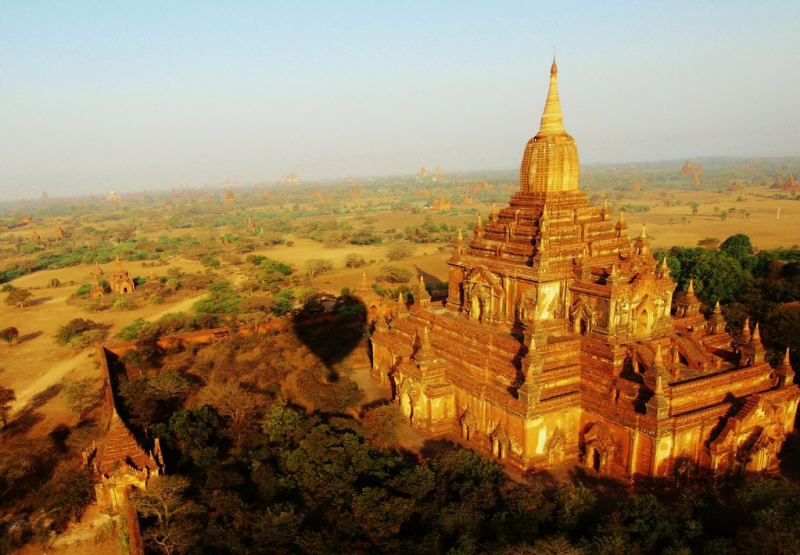
flickr.com 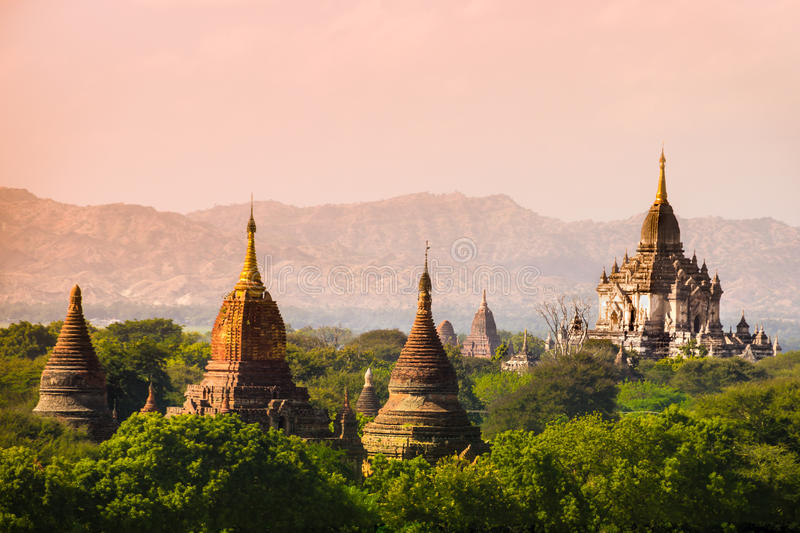
dreamstime.com -
Yangon, previously known as Rangoon, served as the country's capital from 1948 until November 6, 2005, when the military authorities relocated the seat of government 320 kilometers north to Naypyidaw. The new capital is more strategically and centrally positioned. However, no formal rationale for the change has been provided. Some speculate that the move was prompted by an astrologer's prediction of a foreign military invasion. According to the Guardian, it was Than Shwe's "vanity project" from 1992 until 2011. The city has few amenities but receives an uninterrupted supply of energy, which is unique in the nation. It also has a 20-lane highway. However, due to its desolate appearance, journalists have dubbed it a "ghost city."
Yangon was the bustling capital of Myanmar in October 2005. A few weeks later, it was no longer the capital, and government employees were forced to evacuate over 400 kilometers up the road to Naypyidaw. The administration secretly developed the new city before announcing it as the new administrative center.
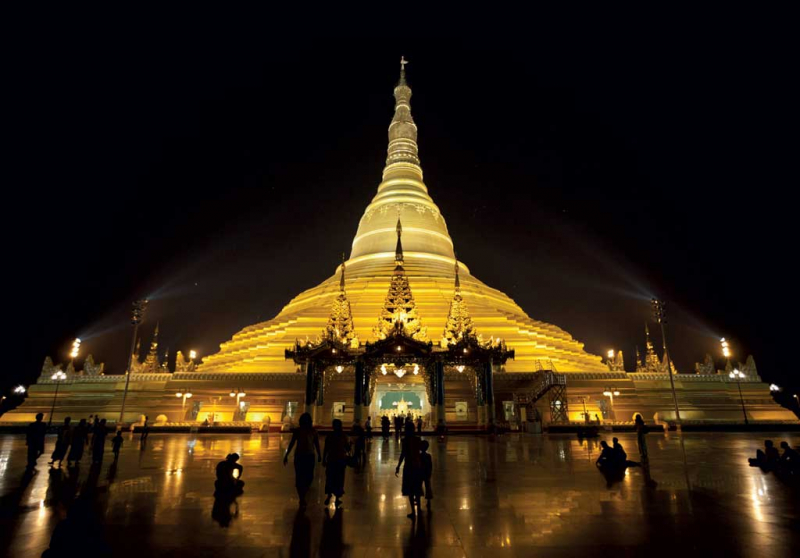
destinasian.com 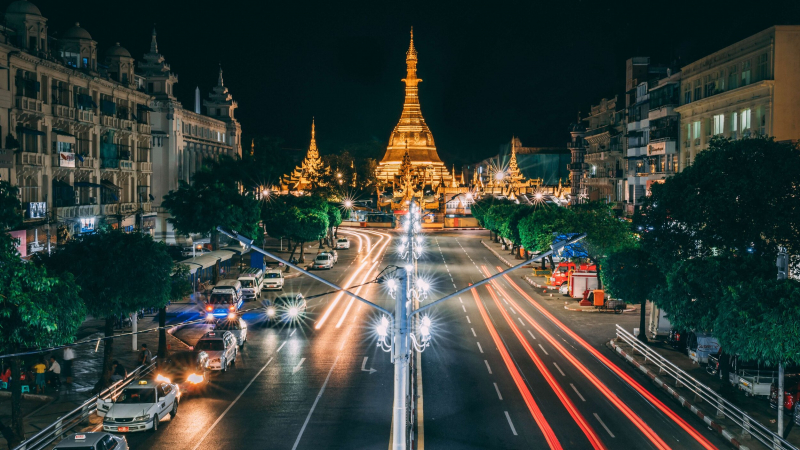
thecommonwanderer.com -
Here's one of the many interesting cultural facts about Myanmar that visitors find surprised. Assume you're dining in a restaurant and want to catch the waiter's attention.
What are your plans? Most individuals wave their hands or try to catch the waiter's sight in order for him to summon them to the table. No way in Myanmar.
Don't point your finger at the waiter or yell, "Boy!" Don't raise your hand and wiggle your fingers; you're bringing him up for punishment, not beckoning. It is preferable to lift your hand with your fingers up as if attempting to capture his attention. You may add a half-smile to your gesture. You won't irritate him this way. Making a kissing sound two or three times in the direction of the person you're contacting us how it's done here. Back at home, this may appear highly impolite and may result in a severe look or a smack about the head. But it's usual here. Males will make kissing noises toward other men to attract their attention, and you should do the same. Before you attempt it for yourself, sit down for a few minutes and see how others behave!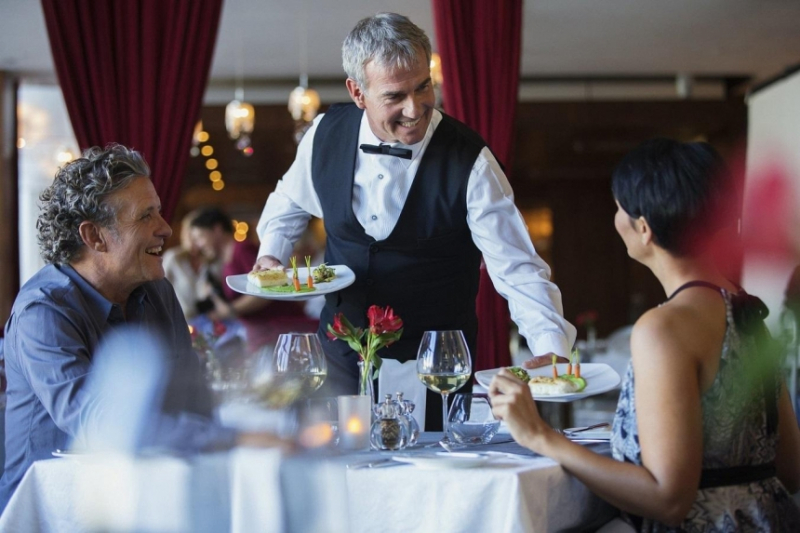
joinposter.com -
When you go to Myanmar, the red stains and betel leaves are one of the things about Myanmar you should know. Almost every street corner in Myanmar has a stand selling kun-ya, a traditional type of stimulant "chewing gum" made of areca nut, betel leaves, dried tobacco leaves, and slaked lime paste that is still popular despite being carcinogenic and harming the user's teeth.
Kun-ya vendors pour the lime paste (calcium hydroxide) on the betel leaf, then sprinkle the tobacco and powdered areca nut on top – sometimes seasoned with cardamom or cloves – before neatly folding the leaf into a square while their clients wait. Chomping on this strong concoction causes users to intermittently spew forth dark-red gobs of sputum, which cover nearly every sidewalk in the Southeast Asian country.Betel leaves are a moderate stimulant that the locals enjoy chewing on for a couple of minutes. Unfortunately, the leaves cause their lips to moisten, which then mixes with the substance's crimson pigment. People then spit this out onto the street, producing crimson marks. The first thing that comes to mind when you see this ubiquitous marking on the floor is probably blood. But it isn't.
When you visit Myanmar, you will notice people chewing this and become acquainted with the crimson stains that litter the streets. Vendors offer huge green leaves containing the nut, spices, and, on rare occasions, tobacco. If you dare, give it a go.
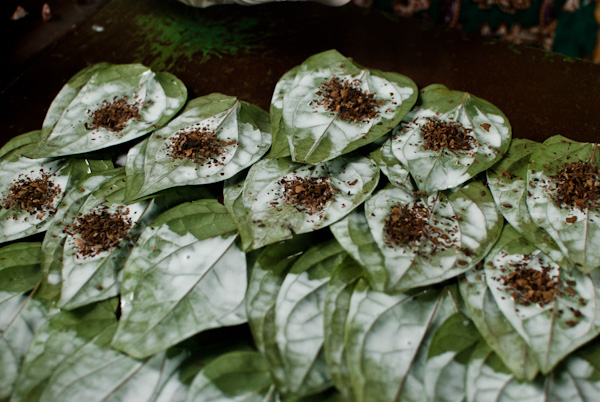
sebastianstrangio.com -
The magnificent Shwedagon Pagoda dominates the Yangon skyline like a brilliant light in the sky. This 112m (367ft) golden, gilded stupa lies atop Singuttara Hill and can be viewed from everywhere in the city.
Myanmar's most important holy site holds four sacred relics, the most notable of which are eight strands of hair from the founder of Buddhism, Siddhartha Guatama. The monarch of Dagon (previous name for Yangon and Rangoon) would build the pagoda and enshrine the artifacts within it on these eight hairs.Shwedagon, which is approximately 2,600 years old, is not only the world's oldest pagoda but also the most costly. The central stupa alone is coated with almost 20,000 bars of gold, which is especially visible at night when dazzling lights highlight its glittering spires.
Yangon's enormous pagoda is symbolic of Myanmar and draws pilgrims from all around the country. Tourists are awestruck by this massive, gold-plated building in the heart of the historic city. When you go, you'll see why it's so valuable. The pagoda's façade is covered in more than 60 tonnes of gold. And if you gaze up at the top of the main stupa, which reaches into the sky, you'll notice a massive diamond sitting inside the hti. On top of the pagoda is a genuine 75 carat (or 15 gram) almost perfect diamond. Not to mention the countless more that adorn the monuments and pavilions.
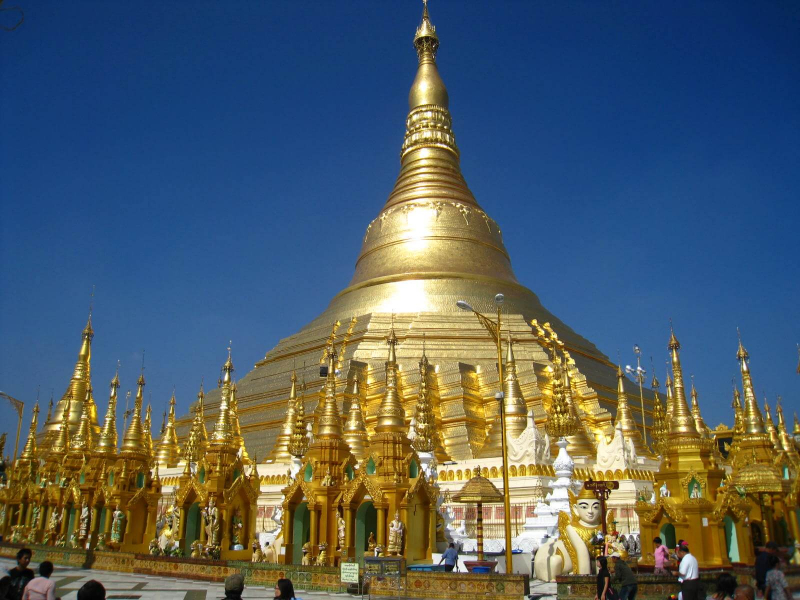
yangondaytours.com 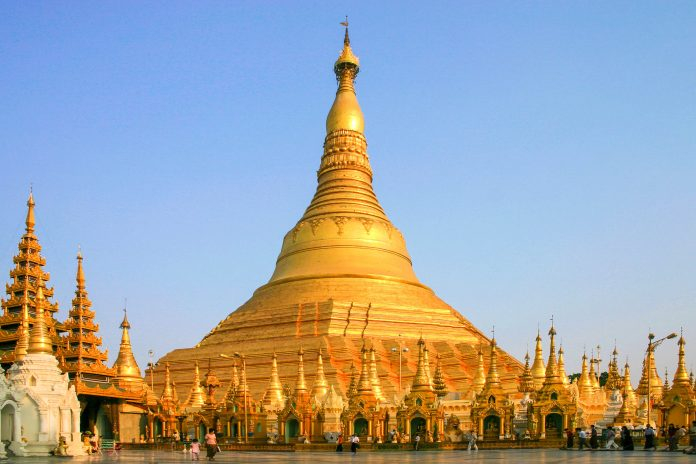
franks-travelbox.com -
Visitors to Myanmar may observe individuals on the streets with what appears to be dirt plastered across their faces. This is a little unsettling at first, but it's nothing to be concerned about. Thanaka is one of the things about Myanmar you should know before you go to this country.
Actually, it's a unique blend of powdered bark from a certain tree. When it's ready, folks apply it to their faces to shield them from the sun. Some claim it is also beneficial to the skin and has anti-aging qualities. When you're in the nation, give it a shot and make your own decision.
Thanaka's history extends back 2,000 years, with the first historical reference occurring in a song from the court of King Rajadhirat, Burma's 14th-century unifier. Thanaka was used as a natural cosmetic concoction throughout the Myanmar kingdoms. For royal households, a lighter and more fragrant Thanaka laced with small gold flakes was utilized, whilst commoners used Gant gaw pollen paste (Mesua Ferrea).
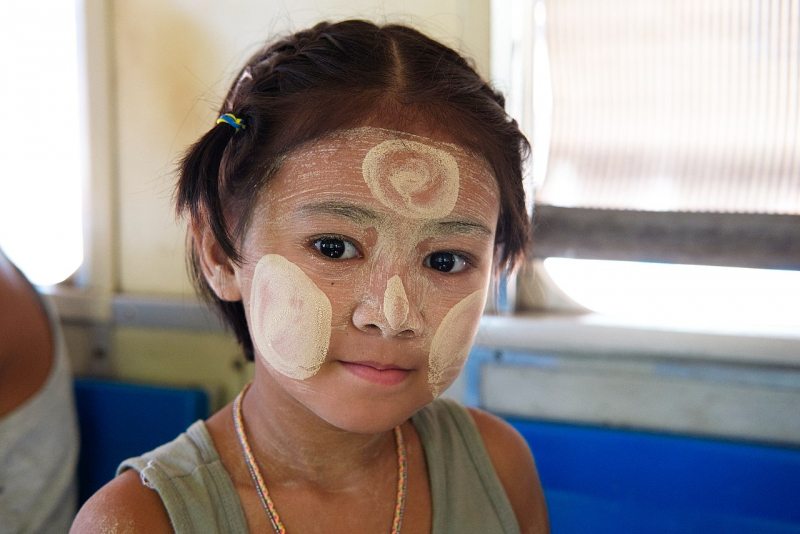
wikiwand.com 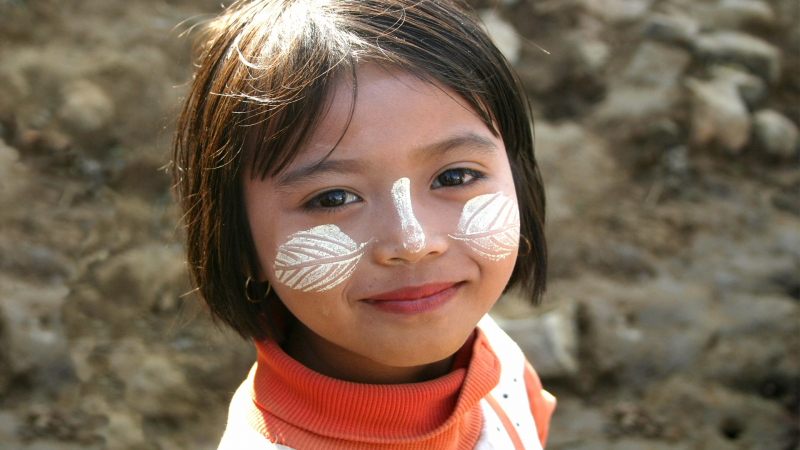
amasiatravel.com -
Myanmar was governed by the British for over a century, therefore it acquired some of their customs and traditions. One of these is driving style. Early cars drove on the left, just like their old colonial overlords. The great majority of other countries drive on the right side of the road. Then, almost as abruptly as the capital was relocated to Naypyidaw, the government decided on one day in 1970 that all automobiles would drive on the opposite side of the road. So the driving is now on the right.
In principle, this may not seem like such a huge problem when you consider that this development occurred 40 years ago. However, it is an issue in practice. Older cars and roads were built to be driven on the left. Some bus stops are also located on the left side of the road. Because automobiles now travel on the right, it might present several issues and challenges for pedestrians. Consider racing across a traffic lane to get to the bus stop! Newer automobiles are intended for right-hand drive, however, older vehicles are not. This means you have a variety of cars, and because individuals rarely respect traffic regulations, it produces mayhem.
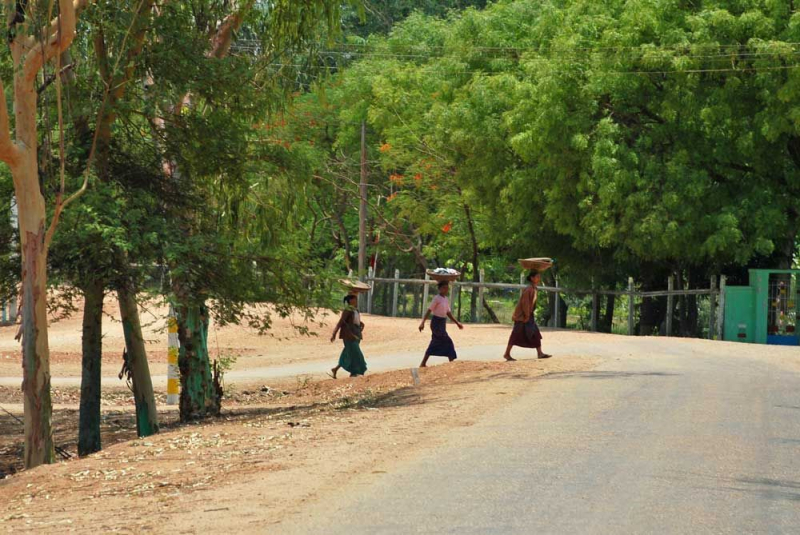
12go.asia -
When researching Myanmar's geography facts, you will notice that the various areas are home to a variety of ethnic groups. Each group has its own culture and traditions. At Inle Lake, you may see some using a unique one-legged rowing method, while others wear hefty rings to extend their necks. The Bamar ethnic group accounts for around 70% of the population.
Myanmar, blissfully unspoiled by mass tourism, provides travelers with a once-in-a-lifetime opportunity to journey back in time. Myanmar, located at the crossroads of the Indian continent and the rest of Southeast Asia, is a cultural melting pot made up of over 135 distinct ethnic groups, each with its own history, culture, and language. This variety is a refuge for foodies eager to try Burmese cuisine's various regional specialties, which vary from earthy curries to flavorful soups.
Myanmar is endowed with breathtaking natural beauty, from the picturesque Inle Lake, which is home to the rare Intha leg rowers, to the unspoiled Mergui Islands. However, the busy metropolis of Yangon is the greatest spot to see the country in transition, as century-old British colonial-era structures compete for space with the growing modern cityscape. Myanmar is a melting pot of nationalities and cultures. This makes it ideal for cultural travel since it allows you to meet and engage with a diverse range of individuals.
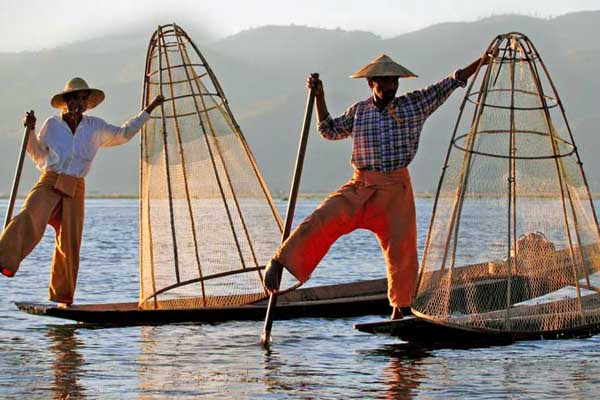
domyanmartours.com 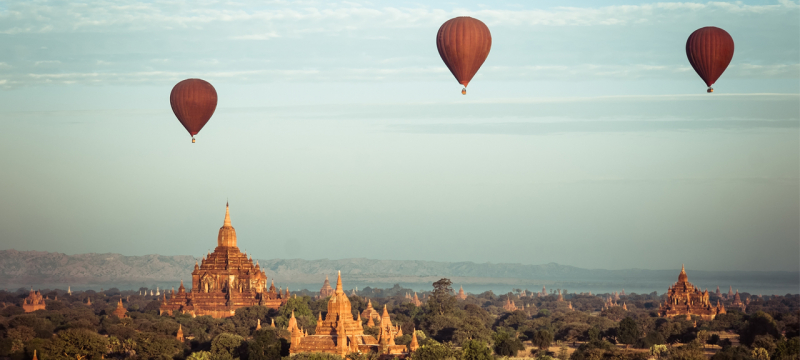
trailsofindochina.com














